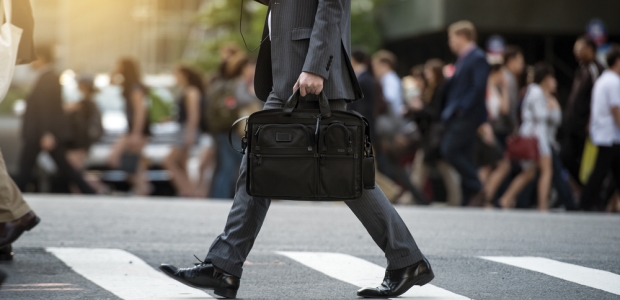
GHSA Projects 2018 Pedestrian Fatalities Highest Since 1990
A new report from the Governors Highway Safety Association projects that 6,227 pedestrian fatalities took place on U.S. roads in 2018. The projection would be the highest number of pedestrian fatalities since 1990.
A new report from the Governors Highway Safety Association (GHSA) projects that 6,227 pedestrian fatalities took place on U.S. roads in 2018. That would be the highest number of pedestrian fatalities since 1990.
GHSA's yearly "Spotlight on Highway Safety" report shows a first look at state and national trends in 2018 pedestrian traffic deaths, with projections based on preliminary data provided by state highway safety offices in all 50 states and the District of Columbia. States were asked to report pedestrian fatalities for the first six months of 2018. After GHSA adjusted this raw data based on historical trends, the organization projects a 4 percent increase in the number of pedestrian fatalities during the full 2018 calendar year. In 2017, 5,977 pedestrians were killed in motor vehicle crashes, GHSA said.
"While we have made progress reducing fatalities among many other road users in the past decade, pedestrian deaths have risen 35 percent," GHSA Executive Director Jonathan Adkins said. "The alarm bells continue to sound on this issue; it's clear we need to fortify our collective efforts to protect pedestrians and reverse the trend."
Projections show pedestrians accounting for 16 percent of all traffic deaths in 2018, compared with 12 percent in 2008. While advancements in technology and safety for motor vehicles have increased survivability for those inside of vehicles involved in crashes, pedestrians remain just as susceptible to sustaining serious or fatal injuries when struck by a vehicle.
According to GHSA, a number of trends offer insight into the reasons behind the increase in pedestrian fatalities:
- More walking has increased exposure; one survey estimated that the number of Americans walking to work in the past week increased about 4 percent between 2007 and 2016.
- Most pedestrian fatalities occur on local roads, at night, away from intersections, suggesting that safer road crossings are necessary. During the past 10 years, crashes at night account for more than 90 percent of the total increase in pedestrian deaths.
- Many unsafe driver behaviors, including speeding and distracted/drowsy driving, pose risks to pedestrians, and alcohol impairment by the driver and/or pedestrian was reported in about half of traffic crashes resulting in pedestrian fatalities in 2017.
- The number of sport utility vehicles (SUVs) involved in pedestrian fatalities has increased by 50 percent since 2013, while non-SUV passenger cars' involvement in pedestrian fatalities increased by 30 percent during the same period. While passenger cars still account for the majority of pedestrian deaths, SUVs make up an increasingly large percentage of registered vehicles, and SUVs generally cause more severe injuries to pedestrians.
"Crossing the street should not be a death sentence," said report author Richard Retting. "We have a range of proven infrastructure, engineering, and behavioral strategies that we know can reduce pedestrian deaths. Critical improvements to road and vehicle design are being made but take significant time and resources to implement. It is also important to conduct law enforcement and safety education campaigns now to ensure drivers and pedestrians can safely coexist. It's crucial to do everything we can to protect pedestrians utilizing a broad approach."
The report also discusses strategies to reduce pedestrian and motor vehicle crashes and addresses promising infrastructure, educational, and enforcement approaches. Specific examples from a majority of states are outlined, such as targeted law enforcement efforts, outreach in high-risk areas, pedestrian safety assessments, and road safety audits.